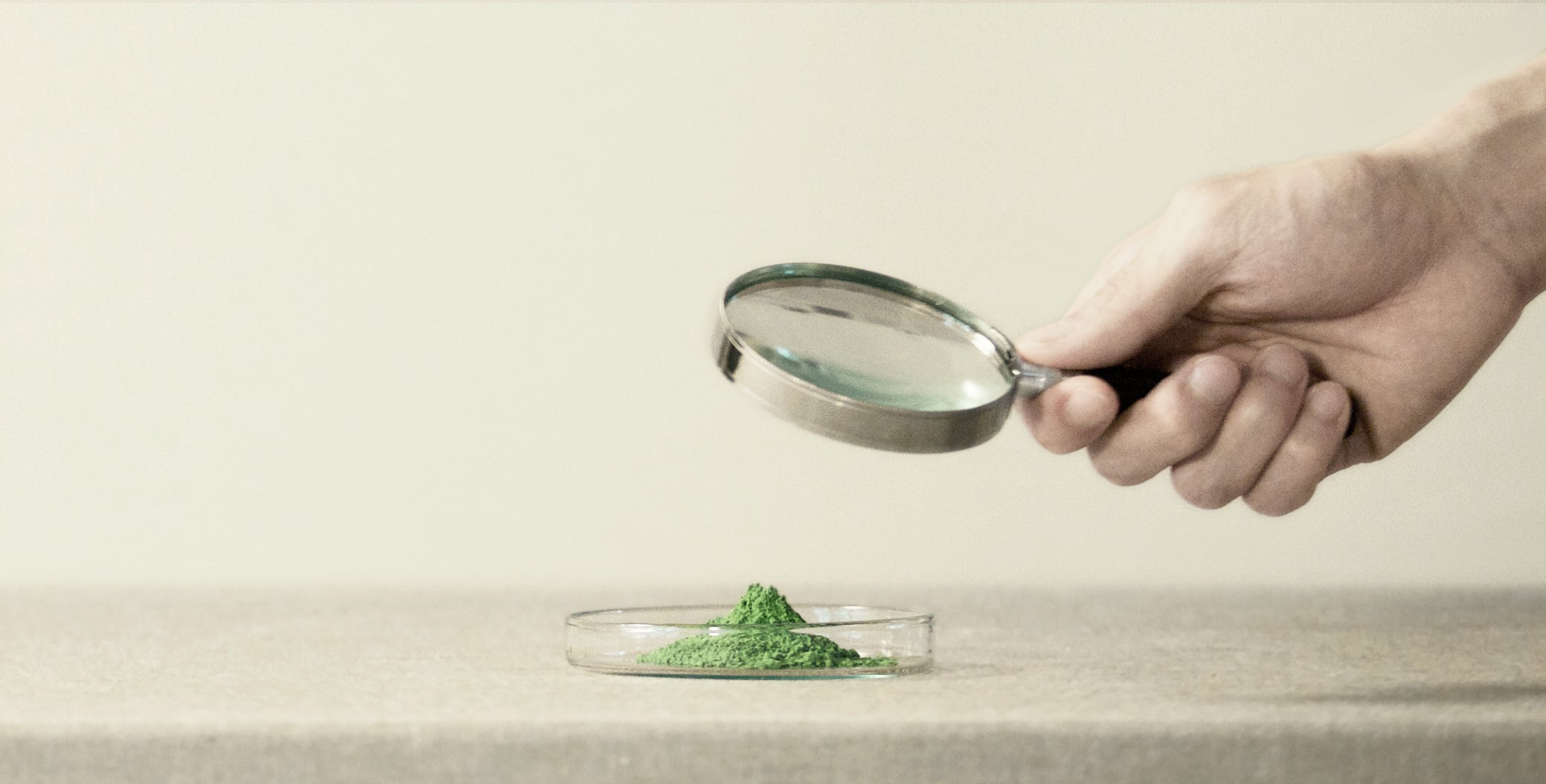Like fine wine, matcha comes in a broad quality spectrum. While it’s not typically easy to determine the matcha quality simply by looking at the label alone, there are four main “sensory cues” one can use to assess the quality of matcha: colour, texture, aromas, and taste.
Colour: Higher grades of matcha should have a deep, electric, blue-ish green colour as opposed to light, camouflage, yellowish-grey colour. This is due to the fact that high-quality matcha is ground from the youngest ‘virgin’ leaves of shade-grown tea trees rich in chlorophyll, which gives it a hallucinogenic blue-ish green hue. Lower-quality matcha, on the other hand, come from the older tea leaves on the lower part of the tea plants that are lighter and more yellowish in colour. In fact, Japanese tea producers typically categorise the colour of matcha into either ‘pine-tree’ green (blueish green) or ‘bamboo’ green (yellowish green), for the higher and lower grades of matcha respectively.
Texture: Fine matcha should have an ultra-fine texture similar to a talcum powder or a mascara, with an average particle size of around 10m micron. The matcha particle size and shape is primarily determined by two factors: the quality of the leaves and the grinding method. Higher grades of matcha utilise the younger leaves that are extremely thin and soft; hence they break down into an ultra-fine powder upon grinding. Lower grades of matcha utilise the older, harsher leaves that do not break down easily into fine particle sizes and have a tendency to remain ‘grainier’ and less smooth in the palate. It is also common for fine matcha producers to grind their matcha using a traditional granite stone grinder. This method produces particles of matcha that are rounder in shape, producing a much smoother mouthfeel compared to matcha that are ground using other methods (e.g. metallic ball grinder).
Aromas: The major influencer of our taste perception, in fact, lies in the nose. The aromas of fine matcha should be fresh, sweet, buttery, and inviting to the nose. Crème-de-la-crème grade matcha is often marked by its refreshing green ‘oika’ (覆い香) aroma characteristic of shaded grown tea. Upon opening a new tin of fine matcha, the nose should be met with scents of freshly blended baby green vegetables and microgreens. Lower-quality matcha can give off unpleasant grassy, dusty, and hay-like aromas, or even worse, nothing at all.
Taste: The final cue lies in your palate. When brewed correctly, superior matcha should taste sweet, and not bitter. While inferior matcha can taste unpleasantly bitter and astringent and lie flat in the palate, superior matcha should delight your taste buds with sweet, vegetal notes. Highest grades of matcha such as our Misaki™ or Matsu™ have the complexity of the amino acid structure, producing a natural sweetness without any added sweeteners. They contain a great deal of sweet-savoury ‘umami’ — a defining characteristic of high-quality matcha. Similar to a perfectly pulled espresso, fine matcha should have a full, robust body, with a smooth mouthfeel, and a long, smooth finish that can rev on in your palate for minutes.
Just as there is no shortage of bad wine and bad coffee in the world, the markets are full of poor-quality matcha. We hope that with a set of sensory cues presented above, you will be able to better evaluate the quality of matcha and make an informed purchasing decision going forward.


